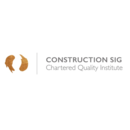Failure modes and effect analysis (FMEA)
Contents |
[edit] What is FMEA and when is it used?
FMEA is a step by step approach for collecting knowledge about possible points of failure in a design, manufacturing or construction process, product or service:
- When a process, product or service is being designed or redesigned
- When an existing process, product or service is being applied in a new way
- Before developing control plans for a new or modified process
- When improvement goals are planned for an existing process, product or service
- When analysing failures of an existing process, product or service
- Periodically throughout the life of the process, product or service.
[American Society for Quality (ASQ) 2017]
[edit] History of FMEA
FMEA was first used by the US navy in 1949 to understand and control the risks in their procedures, including operation of weapon systems. It was also used in the 1960’s for the Apollo missions and then from the 1970’s by the automotive industry.
[edit] Use of FMEA in the project Lifecycle
It can be used by project teams to assess and control how a process or item can fail for example:
- Design – to check the feasibility of design prior to build
- Material – to ensure correct selection of material prior to build
- Construction – to understand risks in assembly prior to build
- Commissioning – to understand potential operational failures prior to use
- Changes to Plan – the potential risks resulting from having to change a process or an item
[edit] Benefits
- Captures collective knowledge of team
- Improves quality, reliability and safety of the process
- Logical structured process identifying areas of concern
- Reduces development time and cost
- Quality led activity
[edit] Steps to undertake the FMEA
[edit] Setup
|
Preparation for Workshop |
Assembling the Team
|
Creating FMEA Template
|
[edit] Consider potential failures (for each critical item / process list the potential points of failure)
Failure Mode |
Effect of failure
| ||||||
Cause of failure
|
Current controls |
[edit] Assessment of failure
|
Occurrence (OCC)
|
Severity (SEV) |
|
Detection (DET) |
Risk Priority Number (RPN)
|
[edit] Actions to be taken
|
Revised Assessment
|
Post FMEA
|
[edit] Related Tools
- DFMEA – procedure used in engineering to explore the possibility of a design failing in a real world situation.
- PFMEA – procedure which focuses on the failures of a process
- FMECA – extension to FMEA which introduces an additional metric called criticality.
This article was originally written by Alan Grogan on behalf of the CQI Construction Special Interest Group, reviewed by members of the Competency Working Group and approved for publication by the Steering Committee on 1 May 2019.
--ConSIG CWG 20:27, 26 May 2019 (BST)
[edit] Related articles on Designing Buildings
- Annex SL.
- Change control: a quality perspective.
- Cracking and building movement.
- Defects.
- Design Failure Mode and Effects Analysis.
- Failure.
- How to write an inspection and test plan.
- Inspection and test plan.
- Latent defects.
- Lifts and escalators: a quality perspective.
- Mobilisation to site: a quality perspective.
- Patent defects.
- Quality tools: fishbone diagram.
- Smarter systems predicting failure.
- Structural steelwork: a quality perspective.
- Why should quality be important to the construction industry?
Featured articles and news
One of the most impressive Victorian architects. Book review.
RTPI leader to become new CIOB Chief Executive Officer
Dr Victoria Hills MRTPI, FICE to take over after Caroline Gumble’s departure.
Social and affordable housing, a long term plan for delivery
The “Delivering a Decade of Renewal for Social and Affordable Housing” strategy sets out future path.
A change to adoptive architecture
Effects of global weather warming on architectural detailing, material choice and human interaction.
The proposed publicly owned and backed subsidiary of Homes England, to facilitate new homes.
How big is the problem and what can we do to mitigate the effects?
Overheating guidance and tools for building designers
A number of cool guides to help with the heat.
The UK's Modern Industrial Strategy: A 10 year plan
Previous consultation criticism, current key elements and general support with some persisting reservations.
Building Safety Regulator reforms
New roles, new staff and a new fast track service pave the way for a single construction regulator.
Architectural Technologist CPDs and Communications
CIAT CPD… and how you can do it!
Cooling centres and cool spaces
Managing extreme heat in cities by directing the public to places for heat stress relief and water sources.
Winter gardens: A brief history and warm variations
Extending the season with glass in different forms and terms.
Restoring Great Yarmouth's Winter Gardens
Transforming one of the least sustainable constructions imaginable.
Construction Skills Mission Board launch sector drive
Newly formed government and industry collaboration set strategy for recruiting an additional 100,000 construction workers a year.
New Architects Code comes into effect in September 2025
ARB Architects Code of Conduct and Practice available with ongoing consultation regarding guidance.
Welsh Skills Body (Medr) launches ambitious plan
The new skills body brings together funding and regulation of tertiary education and research for the devolved nation.
Paul Gandy FCIOB announced as next CIOB President
Former Tilbury Douglas CEO takes helm.























